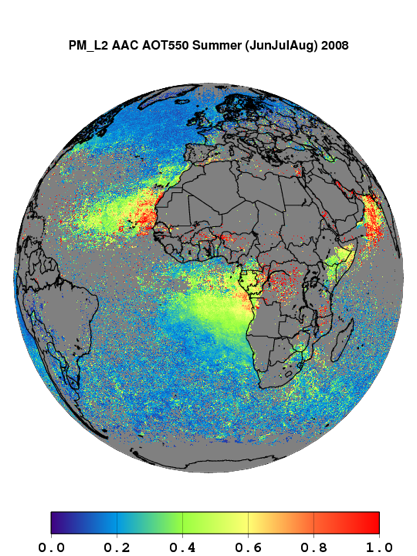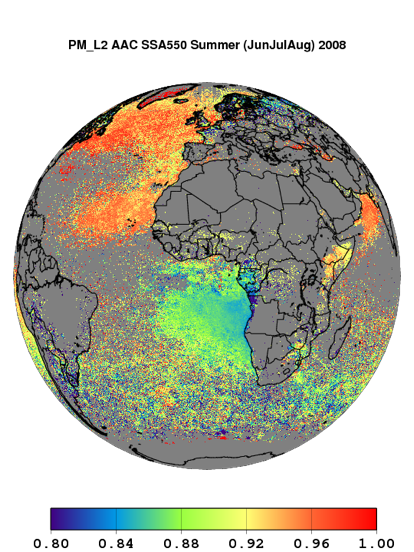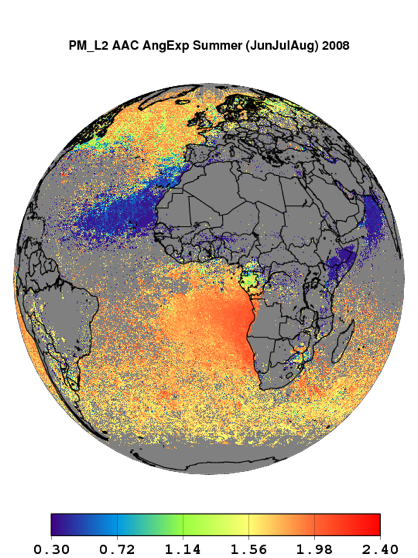Summary
This website describes the Aerosol Above Clouds algorithm developed for the POLDER/PARASOL sensor and its related products.
The algorithm mainly uses the polarized measurements provided by the POLDER polarimeter to retrieve the aerosol properties above clouds. The method was originally developed by Fabien Waquet at Laboratoire d’Optique Atmosphérique (LOA) in the frame of the POLDER/PARASOL mission (CNES and PNTS supports) and with the help of ICARE data center (PML2 data). These products were used in several studies to evaluate climate models and other aerosol above clouds products. This product also relies on different MODIS NASA products to select the cloudy scenes.
Fine mode aerosols (of about 0.1 microns in radius) generate an additional polarized light at forward and side scattering angles (70–130◦) where the polarized light reflected by the cloud is minimized. Coarse mineral dust particles do not much polarize light, but strongly minimize the cloud bow magnitude (i.e. a strong polarized rainbow feature observed near 140◦ in scattering angle). Based on these two effects, Waquet et al. (2009) and (2013) have developed a method for retrieving the aerosol Above Aerosol Optical Depth (ACAOD) and the Angström Exponent. The method was then improved by including additional total radiance measurements (Peers et al., 2015) to simultaneously retrieve the above cloud aerosol Single Scattering Albedo (ACSSA) and the cloud optical thickness of the below cloud layer (COT). The instantaneous direct aerosol forcing (W.m-2) of aerosol above clouds (DRE) is also computed and provided. The aerosol above cloud properties are only retrieved in case of homogeneous optically thick (COT > 3) and liquid water clouds. Cloud fractional covers and cloud edges are removed. Cirrus above liquid water clouds are also filtered and different quality criteria are eventually applied to improve the products.
Example of above cloud AOD at 550 nm, SSA at 550 nm and Angström exponent computed between 670 and 865 nm. Mean values for July, August and September 2008. Type of product : AERO-AC-quality-assured-absorption-6km.
Generated products
3 products are currently available:
- The “AERO-AC-polarization-18km”: the historical one, it contains the ACAOD and the Angström exponent at 670 nm and 865 nm. These products are available over dark ocean, icy ocean, land and snow scenes.
- The “AERO-AC-absorption-6km”: contains the ACAOD, Ansgtröm exponent, ACSSA, COT at 490, 550, 670 and 865 nm and the aerosol forcing. These products are mainly available over dark ocean scenes.
- The “AERO-AC-quality-assured-absorption-6km”: same product as previous one with additional criteria added to ensure the quality of the retrieval of the aerosol absorption.
Daily data as well as monthly and seasonal means are provided for these 3 products.



